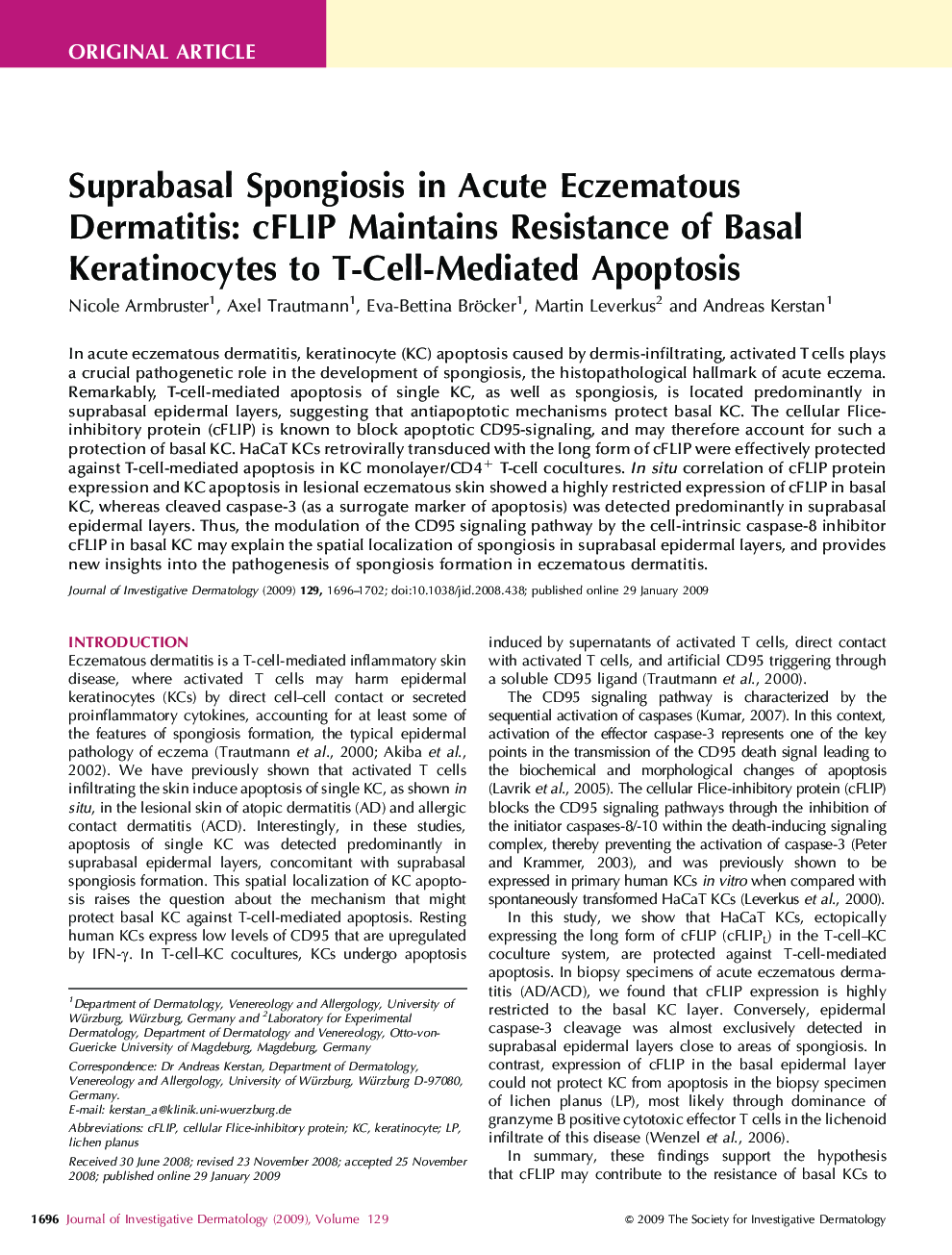| Article ID | Journal | Published Year | Pages | File Type |
|---|---|---|---|---|
| 3217641 | Journal of Investigative Dermatology | 2009 | 7 Pages |
In acute eczematous dermatitis, keratinocyte (KC) apoptosis caused by dermis-infiltrating, activated T cells plays a crucial pathogenetic role in the development of spongiosis, the histopathological hallmark of acute eczema. Remarkably, T-cell-mediated apoptosis of single KC, as well as spongiosis, is located predominantly in suprabasal epidermal layers, suggesting that antiapoptotic mechanisms protect basal KC. The cellular Flice-inhibitory protein (cFLIP) is known to block apoptotic CD95-signaling, and may therefore account for such a protection of basal KC. HaCaT KCs retrovirally transduced with the long form of cFLIP were effectively protected against T-cell-mediated apoptosis in KC monolayer/CD4+ T-cell cocultures. In situ correlation of cFLIP protein expression and KC apoptosis in lesional eczematous skin showed a highly restricted expression of cFLIP in basal KC, whereas cleaved caspase-3 (as a surrogate marker of apoptosis) was detected predominantly in suprabasal epidermal layers. Thus, the modulation of the CD95 signaling pathway by the cell-intrinsic caspase-8 inhibitor cFLIP in basal KC may explain the spatial localization of spongiosis in suprabasal epidermal layers, and provides new insights into the pathogenesis of spongiosis formation in eczematous dermatitis.
